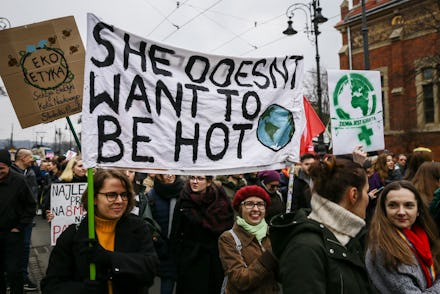Over 200 environmental activists were killed last year. What's happening?

2019 saw some of the biggest demonstrations of environmental activism in history. Millions of people around the world participated in marches, protests, and acts of civil disobedience, all aimed at getting politicians and moneyed interests to finally take seriously the threat of climate change. While massive events like Greta Thunberg's Global Climate Strike garnered the most attention, local activists around the world put their lives on the line to defend their native land and environment, and a disturbing number of those demonstrators were killed. According to independent watchdog Global Witness, a record 212 climate activists were murdered in 2019.
While climate activists are at risk no matter where in the world they choose to fight, two countries accounted for over half of the deaths recorded in 2019. Colombia saw 64 activists killed in the last year, a record number in the country, while the Philippines saw 43 deaths. Global Witness previously identified the Philippines as the deadliest country for environmental activists. Twenty-four activists in Brazil lost their lives, along with 18 in Mexico, 14 in Honduras, and 12 in Guatemala. A total of 15 other countries had at least one instance of a climate activist being killed over the course of 2019, with an average of four activists losing their lives each week over the course of the year. Global Witness noted that the true number of killings is likely even higher, as cases can often go undocumented or unreported.
Violence against environmental activists has been on the rise for several years now, and the number of murders committed against these defenders has doubled over the course of the last 15 years. Additionally, the report indicated that the coronavirus pandemic has intensified the challenges faced by activists, as governments crack down on acts of dissent and strengthen social distancing enforcement measures to keep demonstrators at bay from potentially harmful environmental projects, all while loosening regulations on polluters.
The report indicated that mining was the deadliest sector for climate defenders, with a total of 50 people killed while demonstrating against the industry. The agriculture sector was also a leading threat, with 34 deaths. This industry was particularly dangerous in Asia, where 80 percent of all agribusiness-related attacks occurred.
A disproportionate number of the victims of killings and acts of violence were committed against indigenous communities. Members of these communities often stand up to protect the lands of their people, putting their lives at risk to prevent destruction and disruption. According to the report, 33 deaths of environmental defenders took place in the Amazon region over the course of 2019. Those deaths accounted for 90 percent of the killings of activists that occurred in Brazil last year.
While the deaths are particularly disturbing, activists face other forms of violence and intimidation as well. People fighting for the interests of environment exploiters and those who oppose the disruptive nature of environmental activists and defenders have committed acts of violence against demonstrators. Activists have also been targeted by law enforcement, resulting in arrests. Some have been harassed with death threats and lawsuits. According to Global Witness, women defenders face a disproportionate percentage of abuse. They are often subject to smear campaigns that try to raise issues within their private lives and victims of sexual violence.
To protect the lives of environmental activists, Global Witness recommends not falling back from active demonstration but rather to increase efforts. The organization advocated for following the lead of those who lost their lives by pushing people in power to address climate change and take steps to protect the environment rather than destroying it. By ensuring that projects and operations are carried out with due diligence, transparency, proper environmental protections, and consent from those occupying surrounding land, demonstrators won't have to regularly put their lives on the line to deliver their message.